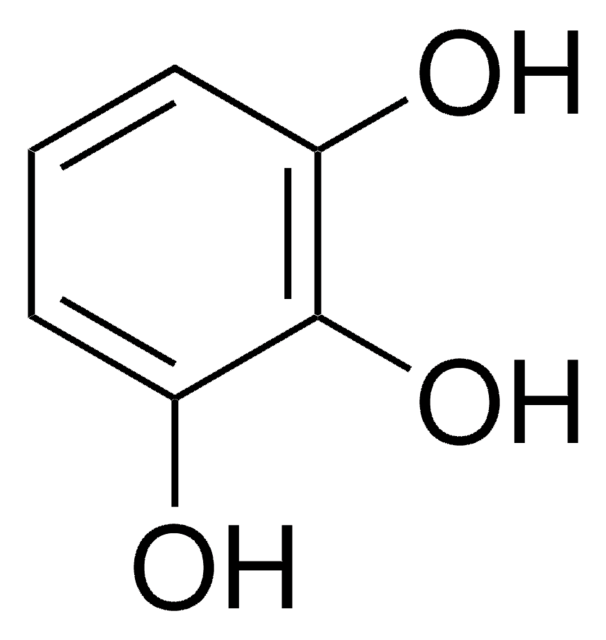16301
D--(+)-Glucosio
meets analytical specification of Ph. Eur., BP, Ph Franç., 97.5-102.0% anhydrous basis(HPLC)
Sinonimo/i:
Destrosio
About This Item
Prodotti consigliati
Saggio
97.5-102.0% anhydrous basis (HPLC)
Livello qualitativo
Stato
powder
Attività ottica
[α]20/D +52.5 to +53.3°, c = 10% in H2O (calc. on anhydrous subst.)
Qualità
meets analytical specification of Ph. Eur., BP, Ph Franç.
Impurezze
residual solvents, complies
97.5-102.0% anhydrous basis (HPLC)
Residuo alla calcinazione
≤0.1% (as SO4)
Colore
white
Intervallo di pH utile
6-7 (20 °C, 100 g/L)
Punto di fusione
~83 °C (181 °F )
Solubilità
H2O: 10g/5 mL, clear, colorless
Anioni in tracce
chloride (Cl-): ≤100 mg/kg
sulfite (SO32-): ≤15 ppm
Cationi in tracce
Al: ≤0.5 mg/kg
As: ≤1 mg/kg
Ba:, in accordance
Ca: ≤200 mg/kg
Pb: ≤0.5 mg/kg
Stringa SMILE
O.OC[C@@H](O)[C@@H](O)[C@H](O)[C@@H](O)C=O
InChI
1S/C6H12O6.H2O/c7-1-3(9)5(11)6(12)4(10)2-8;/h1,3-6,8-12H,2H2;1H2/t3-,4+,5+,6+;/m0./s1
SPFMQWBKVUQXJV-BTVCFUMJSA-N
Cerchi prodotti simili? Visita Guida al confronto tra prodotti
Applicazioni
Azioni biochim/fisiol
Altre note
Codice della classe di stoccaggio
11 - Combustible Solids
Classe di pericolosità dell'acqua (WGK)
WGK 1
Punto d’infiammabilità (°F)
Not applicable
Punto d’infiammabilità (°C)
Not applicable
Dispositivi di protezione individuale
Eyeshields, Gloves, type N95 (US)
Scegli una delle versioni più recenti:
Possiedi già questo prodotto?
I documenti relativi ai prodotti acquistati recentemente sono disponibili nell’Archivio dei documenti.
I clienti hanno visto anche
Il team dei nostri ricercatori vanta grande esperienza in tutte le aree della ricerca quali Life Science, scienza dei materiali, sintesi chimica, cromatografia, discipline analitiche, ecc..
Contatta l'Assistenza Tecnica.


